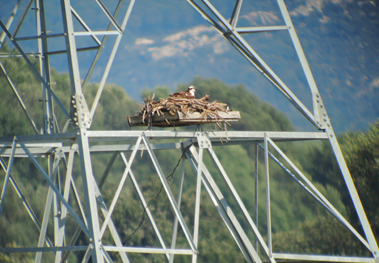The Osprey is an emblematic example of conservation. Currently, the species is progressively recovering in population size and range after dramatic reductions as a consequence of human persecution and the use of pesticides in the nineteenth and twentieth centuries. Here, the population trend and productivity were analysed in relation to the nesting substrate and the protection status of the nest location. The Osprey population steadily grew during the study period, accompanied by the increased use of artificial structures for nesting, possibly due to the scarcity of suitable natural nest sites in the region. Pairs nesting in trees showed higher variance in productivity than those nesting on artificial supports. Further, the productivity recorded in Ospreys nesting on natural sites decreased during the study period, regardless of the protection status of the nest location, whereas it did not vary for pairs nesting on artificial structures. The productivity of Ospreys was also related to the protection status of the nest location since pairs breeding inside protected areas, either in natural or on artificial nest sites, showed higher productivity than pairs nesting outside protected areas. These findings suggest that the protection of the nest location and the type of substrate used for nesting are relevant factors underlying the breeding performance in this Osprey population and are therefore key to its management. informacion[at]ebd.csic.es: Canal et al (2017) Productivity is related to nest site protection and nesting substrate in a German Osprey population. J Ornithol DOI 10.1007/s10336-017-1498-8
https://link.springer.com/article/10.1007/s10336-017-1498-8


 Las altas temperaturas están provocando que las lagunas y las marismas de Doñana pierdan agua rápidamente
Las altas temperaturas están provocando que las lagunas y las marismas de Doñana pierdan agua rápidamente




